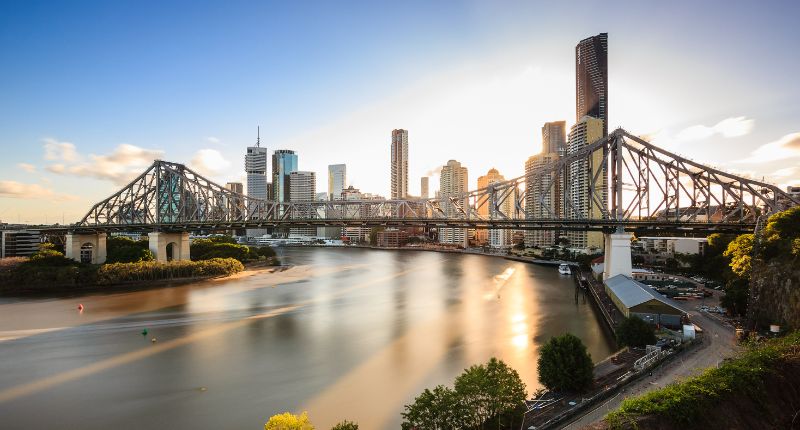
- Brisbane's office leasing market dominated the Asia Pacific region.
- Strong return to office and presence of government occupiers driving the trend.
- Vacancies forecasted to fall further as supply remains scarce.
Brisbane’s office leasing market thrived over the last 18 months, led by a solid return to office trend and a healthy economic backdrop, according to a new report by CBRE.
The star performer in Australia’s office leasing market
From the end of 2021, Brisbane Central Business District (CBD) bumped its tenant base up by 5.9%, making it one of the top performers of the Asia Pacific market, only outdone by Seoul (6.2%).
Meanwhile, other capital cities like Melbourne and Sydney saw their tenant bases shrink by 0.8% and 1.8%, respectively, during the same timeframe.
Asia Pacific – Growth in tenant base over the past 18 months (Dec-21 to Jun-23)

“The dominant occupiers in Brisbane are government, resources, and engineering companies, which are increasing their workforce and absorbing additional office space to cater for both immediate and long-term growth,” said CBRE’s Queensland state director of office leasing, Chris Butters.
“The other major market thematic is the overarching demand for prime grade office accommodation, as active organisations focus on improving both their quality of premises and on-floor workplace environments.
“Looking forward to the second half of 2023, we anticipate that Brisbane’s vacancy levels will contract further with no new supply scheduled to enter the market.”
Workers return to the office
One factor behind the high demand for Brisbane’s office space was the robust return to the office, with occupancy on peak days (Tuesday to Thursday) being near pre-pandemic levels. Additionally, larger companies that occupied over 3,000 square metres (sqm) of space either stuck with the same footprint or expanded when reevaluating their office needs.
“This is different to markets like Sydney and Melbourne, where physical occupancy has been lower, which has led the major banks and other bigger organisations to contract their footprint,” commented CBRE’s head of office research, Tom Broderick.
“Brisbane has also benefitted from government occupiers at both a State and Federal level being particularly active in H1 2023, and typically looked to upgrade their office accommodation, which is causing the prime grade market to tighten.”
Vacancies predicted to spiral further
CBRE’s report came just after the latest Property Council of Australia’s (PCA) Office Market Report for July 2023, which noted that Brisbane was the sole CBD market wherein vacancies dropped over the past 18 months.
By 2021’s end, the Brisbane total vacancy was 15.4%, with the figure now falling to 11.6% after a remarkable net absorption of 116,000 sqm across 18 months. Meanwhile, Melbourne and Sydney experienced a rise in vacancy of over two percentage points over the period, as tenants dwindled.
Brisbane CBD vacancy forecast

In the near term, Brisbane will be facing an unaddressed supply gap, as no new office buildings will be slated for delivery till early 2025, making the CBD vacancy rate drop further — CBRE has forecasted the rate to fall to 8.5% by the end of 2024, which will be the city’s first sub 10% vacancy since late 2012.
“The city’s tightening vacancy is already impacting on prime rents, with our data highlighting 5.0% gross face rental growth over the past 12 months. This trend is likely to continue as large contiguous space in the market is absorbed and vacancy tightens further,” Broderick said.







